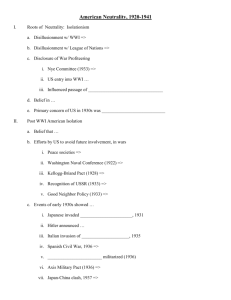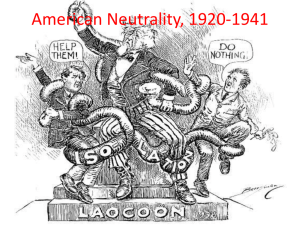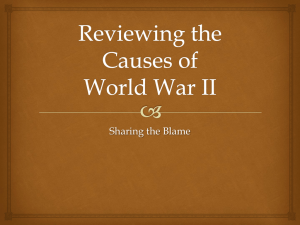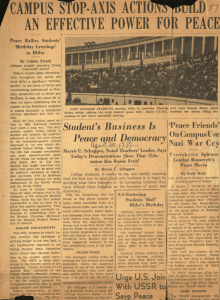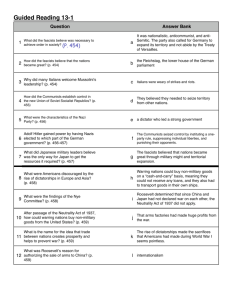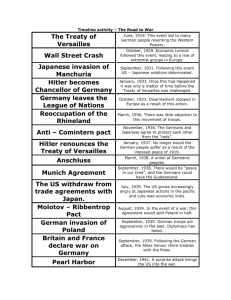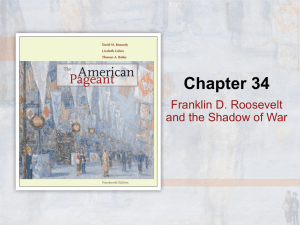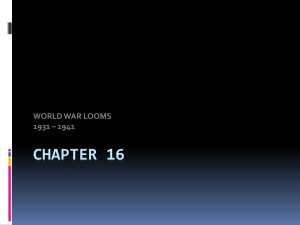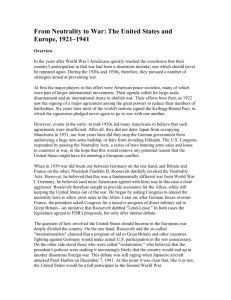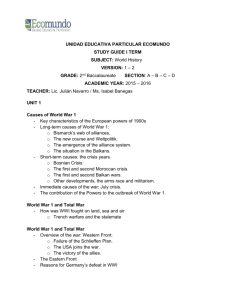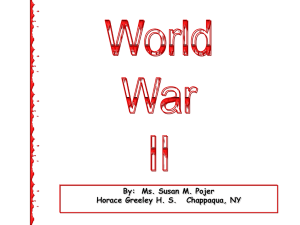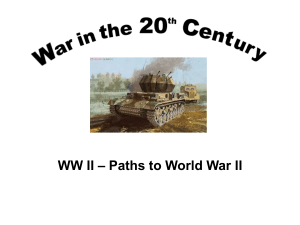Foreign Policy in the 1920s and 1930s
advertisement
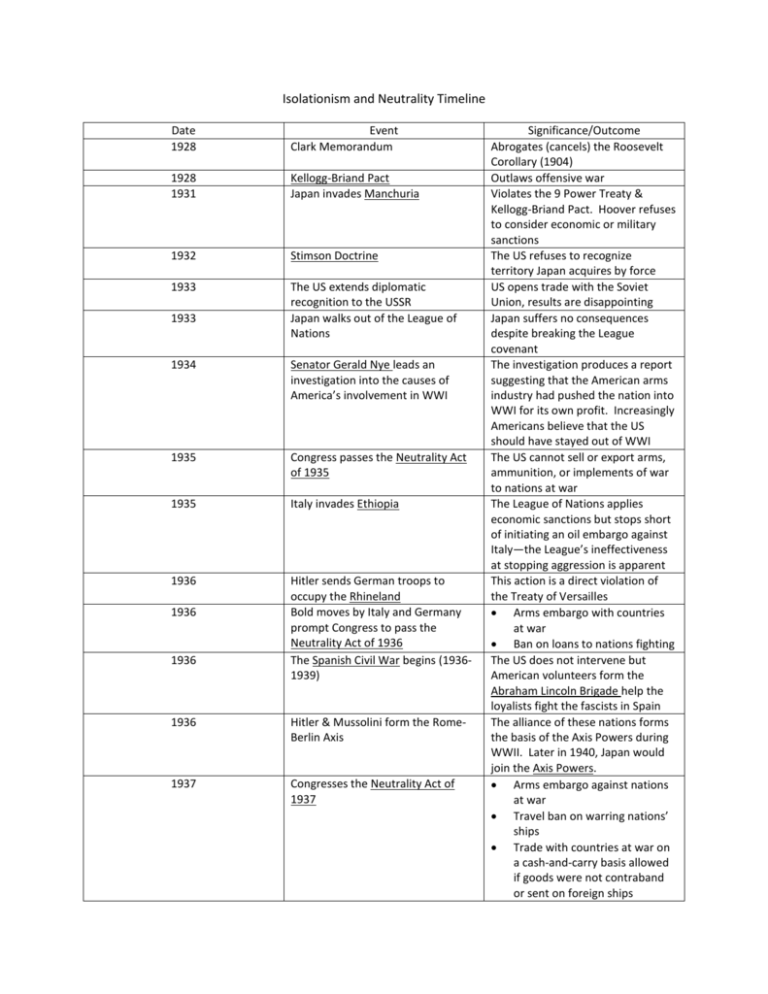
Isolationism and Neutrality Timeline Date 1928 Event Clark Memorandum 1928 1931 Kellogg-Briand Pact Japan invades Manchuria 1932 Stimson Doctrine 1933 The US extends diplomatic recognition to the USSR Japan walks out of the League of Nations 1933 1934 Senator Gerald Nye leads an investigation into the causes of America’s involvement in WWI 1935 Congress passes the Neutrality Act of 1935 1935 Italy invades Ethiopia 1936 Hitler sends German troops to occupy the Rhineland Bold moves by Italy and Germany prompt Congress to pass the Neutrality Act of 1936 The Spanish Civil War begins (19361939) 1936 1936 1936 Hitler & Mussolini form the RomeBerlin Axis 1937 Congresses the Neutrality Act of 1937 Significance/Outcome Abrogates (cancels) the Roosevelt Corollary (1904) Outlaws offensive war Violates the 9 Power Treaty & Kellogg-Briand Pact. Hoover refuses to consider economic or military sanctions The US refuses to recognize territory Japan acquires by force US opens trade with the Soviet Union, results are disappointing Japan suffers no consequences despite breaking the League covenant The investigation produces a report suggesting that the American arms industry had pushed the nation into WWI for its own profit. Increasingly Americans believe that the US should have stayed out of WWI The US cannot sell or export arms, ammunition, or implements of war to nations at war The League of Nations applies economic sanctions but stops short of initiating an oil embargo against Italy—the League’s ineffectiveness at stopping aggression is apparent This action is a direct violation of the Treaty of Versailles Arms embargo with countries at war Ban on loans to nations fighting The US does not intervene but American volunteers form the Abraham Lincoln Brigade help the loyalists fight the fascists in Spain The alliance of these nations forms the basis of the Axis Powers during WWII. Later in 1940, Japan would join the Axis Powers. Arms embargo against nations at war Travel ban on warring nations’ ships Trade with countries at war on a cash-and-carry basis allowed if goods were not contraband or sent on foreign ships 1937 1937 Japan launches a full invasion of the Chinese mainland (SinoJapanese War) Roosevelt gives his “Quarantine the Aggressor” speech 1937 1938 Italy withdraws from the League Hitler brings about the union of Germany and Austria (Anschlusseconomic or political union) 1938 Hitler annexes the Sudetenland 1939 Hitler occupies the rest of Czechoslovakia 1939 Hitler and Stalin sign a NonAggression Pact Sept. 1, 1939 1939 Sept. 3, 1939 Germany invades Poland Neutrality Act of 1939 Britain and France declare war on Germany because of their treaties with Poland Condemned by the League of Nations, this war would continue until 1945 Roosevelt deplores “international lawlessness.” Isolationists are outraged. Public opinion does not support this policy. League takes no action This action violates the Treaty of Versailles. Roosevelt sends a message of concern to Hitler. Mussolini, Chamberlain, and Dalaier sign the Munich Pact which represents a policy of appeasement. Hitler “promises” the Sudetenland “is the last territorial claim I have to make in Europe.” Britain and France abandon the policy of appeasement an declare the will to defend Poland against an attack The alliance of these nations with opposite political philosophies sends fear through Europe and America. The pact contained a secret provision to divide Poland. World War II formally begins. US responds with the Neutrality Act of 1939 The law lifts the embargo on contraband and approves the cash-and-carry export of arms. Stopping just short of war, FDR aides allies War would spread throughout Europe. France falls to Germany in 1940.
